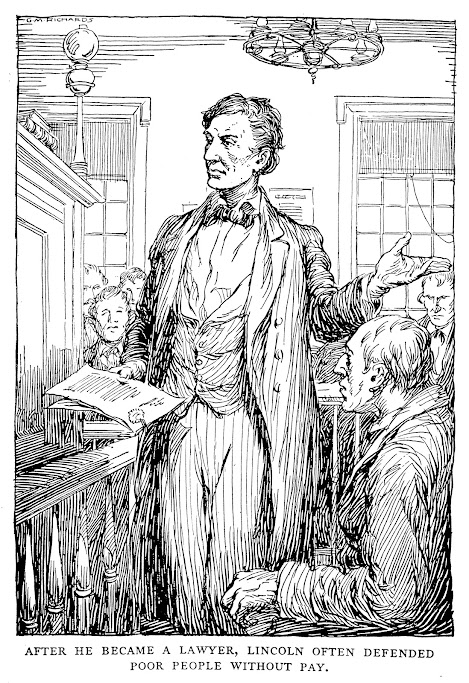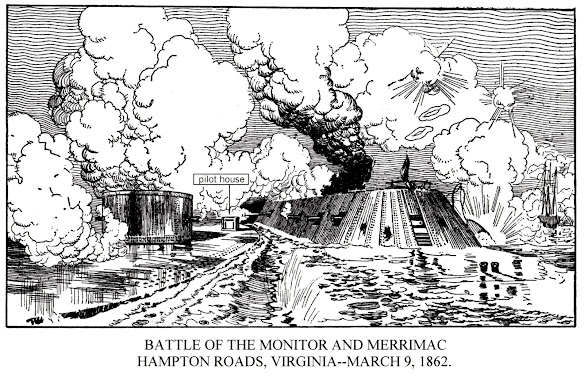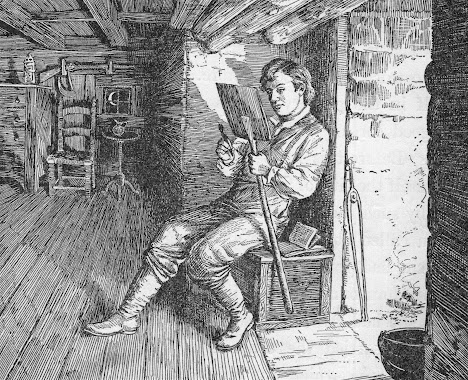Dear Teachers,
I have been scanning
old pictures from history books, and throwing in pictures I've taken at
historic sites or in museums. Feel free to use any of these you can in your
classrooms.
I'm retired; might as well help out the young
educators. None of these are now under copyright.
Sincerely,
John J. Viall
Loveland City Schools, Ohio (1975-2008)
 |
When you are discussing the environment, a good picture sometimes helps. A lake near the top of Tioga Pass, leading into Yosemite National Park. |
 |
A fanciful depiction - since there were no casualties during this fight. |
 |
Lee at Appomattox. I'd ask students to discuss how is men must have felt. |
 |
General Thomas (right) at Chickamauga. James A. Garfield (left), later president, had ridden through heavy fire to tell him most of the Union line had crumbled, but urged him to hold. |
 |
| Most of my African American students didn't know what the Confederate flag really meant. |
 |
For fifty years, you could see this barn off I-71, going north from Cincinnati. |
 |
| A good map to show students how Lee and Jackson destroyed Hooker. |
.jpg) |
"Fighting Joe" Hooker - confused at Chancellorsville. |
 |
Football gear in 1920. (I'm afraid you might get rude comment about "b," before students would realize it's a nose guard. |
 |
In 1905, nineteen players are killed, leading to demands for rules reform. |
 |
What role does sports play in modern American society? The blogger and his son, Seth, left, at the 2022 Super Bowl. We paid $2,500 for each ticket. Are sports overblown? |
 |
 |
Desperate Irish - 1846. No wonder they came here. My students loved to discuss their family backgrounds. The blogger's roots are Irish on one side. |
 |
I'm not sure there has ever been any immigrant group that wasn't disliked by some other group. |
 |
I would ask students: "What do you think the gentleman in the lower right corner is thinking?" "And what would the man at lower left think if he spied him?" |
Story of the backyard find. |
| We often had a good discussion about the difference between the "law" and "justice." For example, the law in Nazi Germany. Or Jim Crow law. |
 |
| Historians used to rank Buchanan as our worst president. I guess I'd dare a teacher today to ask students who they think the worst president ever would be. |
.jpg) |
| My students had very little idea how the draft works. It made for an interesting discussion. |
 |
Farragut at Mobile Bay. I don't know if anyone cares about him anymore. Plus, if it's not on a standardized test.... Well, "Damn the torpedoes..." |
 |
The battle that made wooden ships obsolete. A good topic today might be: "How will drones change modern warfare?" |
.jpg) |
What emotions would these men have felt? Or women back home when they heard the news? |
 |
| April 1865 - Lee's starving troops can no longer continue the fight. Soldier at left is picking berries. |
 |
There was great enthusiasm at the start of the war to enlist. That concept was interesting to my classes. |
 |
People never change. Lazy guards in 1690 built snowmen and hoped no one would get close enough to notice. The French and Indians weren't fooled. |
 |
| Swedes in America - who even remembers??? |
 |
The Dutch settlers introduced "koekjes" to America. Plus donuts! Can your students figure out that the first word is our "cookies?" |
 |
What were the folks in the canoes thinking? |
 |
Exploring was a dangerous business for all kinds of reasons. My classes did like to discuss the reasons they might want to go exploring today. |
 |
If your students have never seen Nevada - a lot of it looks like this. Picture taken along Highway 50, billed "The Loneliest Highway in America." |
 |
Of course, my students appreciated this picture from my ride across the USA. Somewhere in New York. |
 |
One of the joys of adventure: a sunrise over my camp in Utah. |
 |
Tioga Pass takes you into Yosemite National Park, from the Nevada size. For scale, there's a white dot on the road, above my handlebars. That's one of those large mobile campers. |
 |
Spanish soldiers turn the war dogs loose. Cruelty in war... |










.jpg)







.JPG)




























.JPG)






























.JPG)






.JPG)

.jpg)
.jpg)


